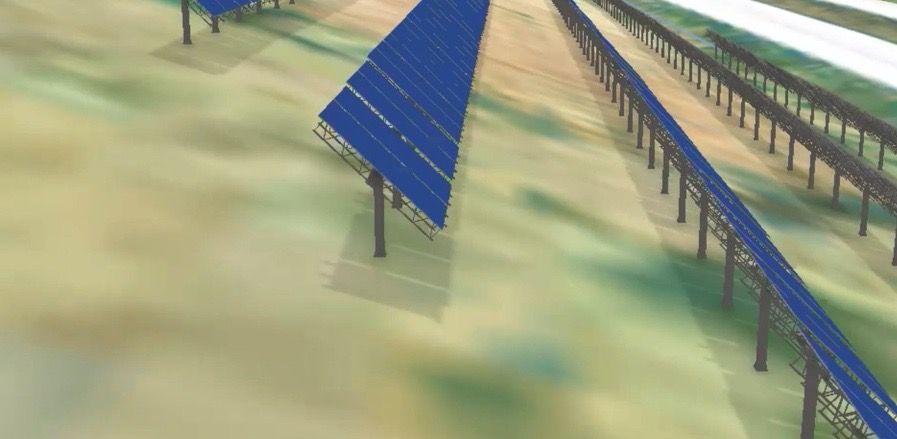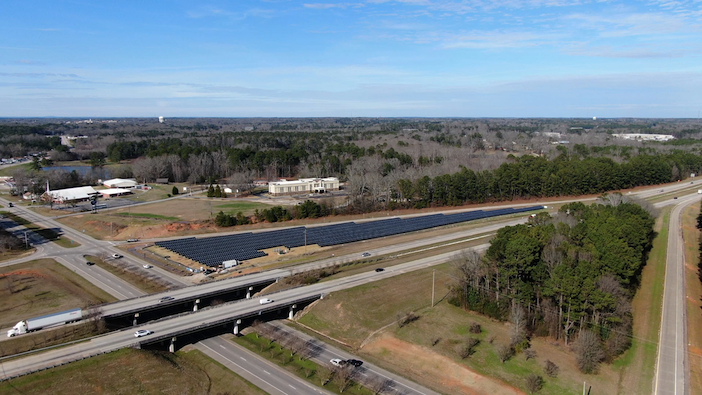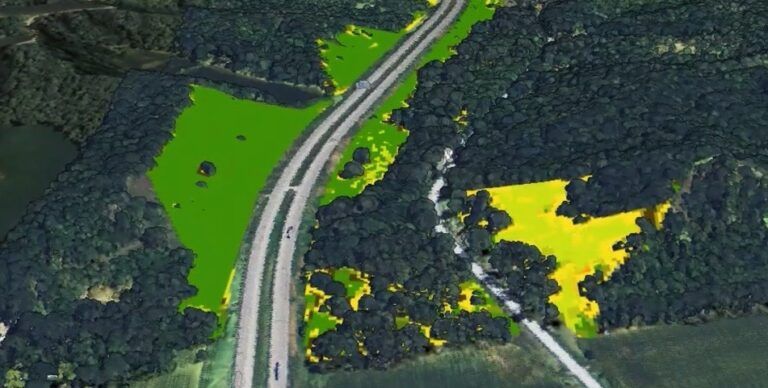Georgia’s interstate smart-mobility testbed The Ray has announced it has partnered with geographical information systems (GIS) experts at Esri to create a mapping tool to assist with ideal placement for roadside solar panels across the USA.
Research published by the Webber Energy Group (WEG) at the University of Texas at Austin, and by The Ray, has documented the efficiency and economic, societal, and environmental benefits of installing solar arrays on interstate right-of-way (ROW) land.
The findings revealed that solar panels at these exits could generate up to 36 terawatt hours (TWh) a year –enough to power 12 million passenger electric vehicles—with the value of the energy generated by roadside solar panels estimated at $4 billion per year.
However, simply installing solar arrays at interchanges, exits, rest areas, and visitor centers – which are maintained by state governments – can be challenging due to safety, environmental, and future land-use considerations. The new Esri tools can help strengthen arguments with solid data detailing the potential yield of solar panels in different locations.

“Since our founding, The Ray has been inspired by the opportunity we saw in the underutilized land along highway roadsides,” says Laura Rogers, deputy director of The Ray. “Now, with the support of this cutting-edge solar mapping tool, The Ray can work with transportation agencies across the country to help them envision and plan solar energy projects using their ROW land in a way that simply wasn’t available before.”
The new mapping tool is also capable of producing precise configurations of solar arrays on all types of ROW, utilizing the state department of transportation’s (DOT) own datasets. Built using Esri’s ArcGIS software suite, the tool includes advanced 3D modeling, solar radiation calculations based on elevation and surface, and viewshed analysis.
Rogers continues, “What used to take weeks or months to evaluate suitability for roadside solar development, this tool that Esri provided accomplishes at a fraction of the time with much more precision.”

With a location built on 18 miles of west Georgia’s section of Interstate 85, The Ray also functions as a proving ground for new technologies like solar power, electric vehicle (EV) charging stations, and smart landscape architecture that can serve as a model for sustainable infrastructure management.

“The partnership between Esri and The Ray essentially helps the country rethink the ROW and move toward a stewardship model for the tens of thousands of acres on the highway roadsides,” says Allie Kelly, executive director for The Ray. “It goes beyond transportation and explores the highest and best use for state DOTs. For some, the priority may be rural broadband or buried energy transmission lines.”
The organization now works within 15 states with over two dozen transportation agencies to replicate their success as a clean highway test bed.
“The Ray is helping state departments of transportation understand the economic and social value of their ROWs for producing renewable energy and making a contribution to our climate challenges, all designed to support a more sustainable transportation future,” says Terry Bills, Esri global transportation industry director.

In addition to calculating the economic potential of all the land area within the ROW, Esri’s solar tool also enables state DOTs and other transportation agencies to do the following:
- Anticipate unintended consequences—and their effect on nearby communities—of installing solar panels on the highway roadsides, such as the interruption of a scenic viewshed
- Engage in preliminary site planning exercises, including having the ability to alter the shape, size, or scope of any solar array in order to address a potential social impact, and compare the economics of various scenarios
- Plan solar arrays on other ROW areas like rest stops and park-and-ride sites, providing solar canopy as well as feeding clean energy into EV charging stations available for commuters
Kelly concludes, “On The Ray Highway, we have demonstrated renewable solar [arrays] on the roadside, and now with Esri, we have the best tools to help other states move quickly to explore, plan, and build out their own ROW projects.”





